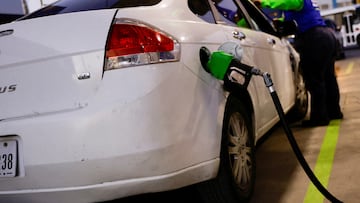ECONOMY
Which countries have the cheapest gas prices in the world?
The US has quite cheap fuel relative to the rest of the world but comes nowhere near the cheapest which have prices that are barely a fraction small.

Gas prices were massively disrupted last year when Russia invaded Ukraine. The cost of fuel in the US hurtled upwards, reaching a peak average of $5.02 per gallon on 14 June, 2022.
Prices in the US have decreased by nearly 4% compared to a year ago. People may think prices are high in the US, and relatively speaking there are, but the vasy majority of nations in the world have fuel that is more expensive.
Only around three dozens nations have cheaper fuel than the US. Using data from globalpetrolprices.com, these are the top ten nations with the cheapest gasoline per US gallon as of 29 October, 2023.
- Iran, $0.108
- Libya, $0.118
- Venezuela, $0.132
- Algeria, $1.268
- Kuwait, $1.285
- Angola, $1.369
- Egypt, $1.409
- Turkmenistan, $1.625
- Malaysia, $1.628
- Kazakhstan, $1.711
Why do these countries have such cheap fuel? The most significant factor influencing gas prices globally is the price of crude oil; the primary raw material. Changes in global oil supply and demand, geopolitical tensions, production disruptions, and OPEC (Organization of the Petroleum Exporting Countries) decisions all impact crude oil prices, which in turn affect gas prices. OPEC recently made a deal to restrict oil production, which has been linked to the creeping up of gas prices in the last month.
Why are Iran, Libya, and Venezuela the cheapest nations for gas?
For one, all these nations all have vast oil reserves. Alongside this, the three cheapest of Venezuela, Libya, and Iran, all have difficulties exporting their produce, either through war or sanctions imposed by the US. This means more of the fuel is available for public consumption and isn’t exported. These countries also heavily subsidise their domestic gasoline prices, meaning that the government provides financial support to keep fuel prices low for consumers.






